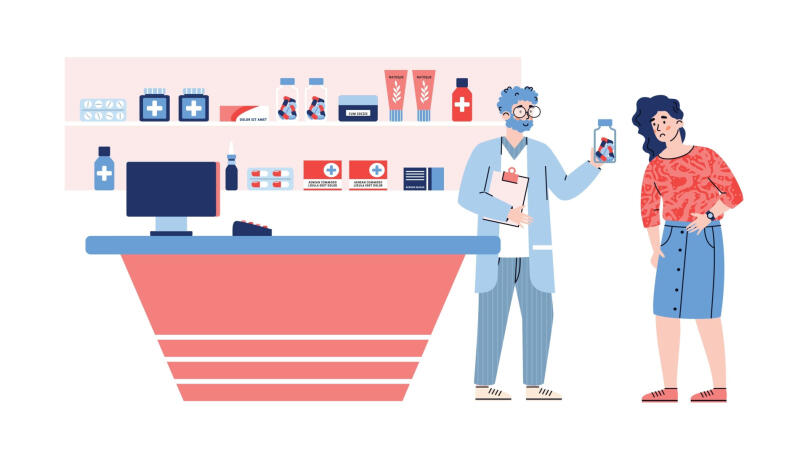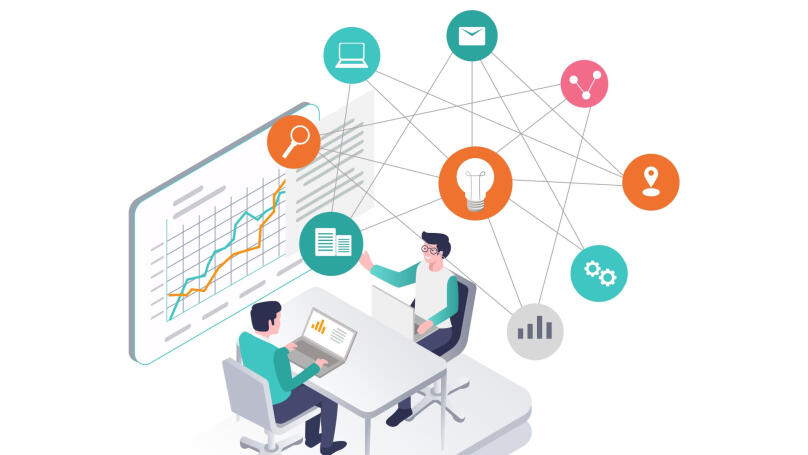Customer pain points

What are customer pain points?
Customer pain points refer to the problems and inconveniences that customers face throughout their customer journey. One could say that customer pain points mean the state of discomfort that a potential buyer experiences due to the inability to satisfy their need. It is important to understand that a person may be concerned about a variety of issues and problems, but for a business, only those that can be solved with the help of the offered product or service are important. Thus, a person does not just acquire some product but pays for the solution to a particular situation.
Some potential customers may not even realise how much pain they are actually experiencing all this time. That is why the main task of the marketer is to convince customers that their problem is real and that it can be easily and painlessly eliminated with the help of a certain product or service. For example, a woman is forced to spend a lot of time cleaning, she experiences chronic fatigue and does not have time for her favourite hobby. Leading and clarifying questions will help the customer realise her pain point and lead her to buy, for example, a robot vacuum cleaner. Therefore, knowing the customers' pain points and what they need is the secret to making sales that work.
What is the difference between the needs and pains of customers?
Unlike pain points, needs can never be fully resolved - they exist constantly and need continuous satisfaction. Essentially, needs are specific indicators that are of particular importance to a person. Thus, back in the middle of the 20th century, the American psychologist Abraham Maslow identified five major groups of human needs:
-
physiological or basic needs (e.g. food, water, and sleep);
-
need for safety and security;
-
social needs (that is, the need for friendship, love, and communication);
-
need for respect and recognition;
-
need for self-actualisation (as well as for development and self-improvement).
Understanding the needs and the difference between them allows you to identify potential buyers for each group of products, create and customise effective advertising, recognise consumer fears and establish trusting relationships with them. However, you can't achieve the most beneficial interaction with the audience knowing only its needs. You should also identify the pain points of each customer segment. That is why the stages of selling any product should include the following:
-
target audience research and segmentation;
-
identifying the true needs and pain points of each customer group;
-
creating a relevant and popular product that will satisfy most of the audience's needs;
-
explaining to potential customers how a product or service can satisfy their needs and, as a result, solve their problems.
Thus, a need can also be called a need for a product, while pain is an obstacle to meeting this need.
Types of customer pain points

Customer pain points are also divided into several categories. Given Maslow's pyramid of needs, they can be associated with the following areas of a person's life:
-
Physical and mental state
These pain points are directly related to potential customers' health and physical and mental state at the time of purchase. For example, consumers may experience self-doubt, fear of making the wrong choice, and other psychological personality traits. These are all obstacles to making a purchase. Moreover, previous buying experience and prejudices can lead to a refusal to purchase and, as a result, cause an unmet need.
Another problem related to the customers' mental state is trust issues. In this case, only long-term contact with the customer and honest reviews from other visitors or buyers will gradually work through doubts and build trusting relationships with the customer.
-
Any lack of resources
It can be financial resources and information, knowledge, or skills. For example, if a person does not have enough knowledge to write a scientific work, they acquire books and if they need to upgrade practical skills, they undergo additional training, visit a master class or attend a workshop. Furthermore, some customers may not be aware of the possible solutions to their problems. In this case, the task of marketers is to inform potential customers and offer them various options for meeting their needs, depending on their requests.
-
Creativity and self-expression
People will develop new, more complex needs if their basic needs and pains are satisfied. This may be, for example, going to a museum, visiting an excursion, or directly participating in any competitions, exhibitions, concerts and other events. You need to ensure easy registration for the event, a clear work schedule and high-quality customer service. Companies that address these customer needs and pain points are usually non-profits, cultural organisations, or schools.
According to the following classification, which is more voluminous and intended primarily for evaluating the effectiveness of the sales funnel, customer pain points are:
-
Financial
These are all the dangers and issues associated with money. In this case, the need has already been formed, but finances serve as an obstacle to its satisfaction. That is, there are simply not enough funds to solve the issue. You can solve it through price reductions, sales, promotions, coupons and promo codes. Yet many use loans for large-scale purchases. For example, real estate is one of the most expensive purchases, so most people cannot do without loans. In this case, the bank provides an opportunity to solve the problem with the most favourable loan offers.
-
Efficiency and result issues
This category of pain points includes the most common consumer concerns related to whether the purchased product will meet their expectations. For example, a customer has bought an inexpensive dishwasher but is not sure if it will clean the dishes thoroughly. So, most often, efficiency fears are associated with products that allow you to automate a process and not do it manually. After all, consumers do not want to spend extra time on what a machine can do. Therefore, the business should offer high-quality goods and minimise the time spent by customers.
-
Technical problems
They are directly related to the purchase of goods. For example, a purchase through an online store may be accompanied by a lengthy registration process, an inconvenient payment method, and other technical difficulties.
-
Privacy concerns
These pain points are also related to online shopping. Many users prefer not to provide their contact and bank details on unfamiliar websites. Thus, the purchase process becomes more difficult, and in most cases, the potential customer will find another way to satisfy the need. For instance, they could go to an offline store.
-
Problem of choice
It appears when the consumer finds several solutions to their problem at once. In other words, various goods from different manufacturers can meet their need, so the customer cannot decide which product is best to purchase in terms of price and quality.
-
Social and public issues
They are associated with the reaction of society and the inner circle to the acquisition of a particular product. For example, many people are embarrassed to buy intimate care items. This is not only about adult stores but also contraception, personal hygiene products, pregnancy tests and other goods.
How to identify customer pain points

For the product to stay in demand and relevant, you should conduct a qualitative study of the market and potential customers and identify all the existing pain points. You can use the following methods to do this:
-
Conduct customer surveys and questionnaires
Identifying the true needs of customers involves constant communication and conducting various regular surveys. They can be arranged both online, by offering to fill out a questionnaire on the store's website, and offline during a personal conversation between a sales assistant and a potential customer. In this case, what matters is what questions to ask. They should be open and imply not just one-syllable "yes" or "no" but full and detailed answers. When the main request or message of the customer becomes clear, you can move on to alternative questions, in which they should choose from some specific options based on product parameters. You should also ask clarifying questions, for example, whether the customer has any buying experience, what they liked, or what they didn't like about the product. So, the main task is to get as many details as possible. If the customer is laconic, you should ask additional questions and if they stray off topic, you need to politely interrupt them and remind them what you've talked about. At the same time, you can't be intrusive. Not all customers are ready to take the time to complete a survey or questionnaire. You should consider this when planning information collection.
-
Explore thematic forums, communities on social media, and other online resources
It makes the most sense to choose communities with a large number of active followers or members. Due to anonymity, many people express their opinions more openly and honestly. So, using such forums and other resources, you can find valuable criticisms, issues that are not obvious to manufacturers, and other customer pain points. Just carefully read all the comments, questions and reviews and find the most frequently repeated ones.
-
Analyse reviews on the company's official platforms
Buyers often leave comments about the purchased product on the company's official social networks, trading platforms and marketplaces, and review sites. You can use them to track feedback, collect data to deal with negative and critical remarks and find weaknesses in customer service and maintenance. Therefore, you should first pay attention to negative reviews, which will help you refine the product according to the customers' needs.
-
Don't forget about special Q&A services
This is another source for analysing needs and identifying customer pain points. This is where many users share their buying experience. For example, one of the most popular opinion exchange services is Quora.
-
Analyse search queries
Studying popular search queries is an equally effective method of identifying customer needs. The information that users are looking for in search engines will help you find out what fears, doubts and questions related to the company's products, most people are concerned about. Thanks to this data, you can create an offer relevant to buyers, which will later be useful and in demand.
-
Study your competitors
You need to regularly review and analyse advertising offers, social media posts, websites and landing pages of competing companies. Determine what their advantages and disadvantages are and what issues their advertising focuses on. In addition, study the reviews and comments on competitors' products. All this will allow you to identify the pain points of your potential customers that competitors could not solve.
How to eliminate the customer's pain points

Customer pain points allow you to promote products, increase brand awareness, and form and strengthen loyal and trusting relationships with the audience. Using pain points effectively involves:
-
Consumer care and client-oriented approach
This means satisfying and anticipating the needs of potential customers. In other words, it's the ability to surprise and offer the target audience more than they expect from your product or service. In addition, you need to build an individual approach to each customer, which manifests itself in a sincere desire to help, promptly providing the best solution to the problem. This is the only way to achieve long-term and trusting relationships with customers.
-
Competent wording of promotional offers
Even though the product must satisfy several customer needs at once, it must have a key task. The main issue or pain point of the target audience must be put in the site's headline, landing page and the description of the product or company account on social media. For example, if after analysing the audience's pain points, the high cost of the product turned out to be the most relevant issue, then all sites should run a promotion and provide information about coupons and promotional codes.
-
Drawing up and periodically updating the sales strategy
A sales strategy is a general plan for the development of a company, which shows in which direction to move, what priorities to focus on, and what results and KPIs to expect. Of course, all this is compiled according to the customers' needs and pain points to bring tangible results in the future.
Thus, the analysis and identification of customer pain points is an effective marketing tool for the development and promotion of both the entire business and a single product. Only by knowing all the pain points can you create a unique selling proposition that will be relevant and in demand among the majority of potential customers. Moreover, this will strengthen your ties with regular customers, attract new consumers, establish trusting relationships with them and increase brand loyalty and awareness.























